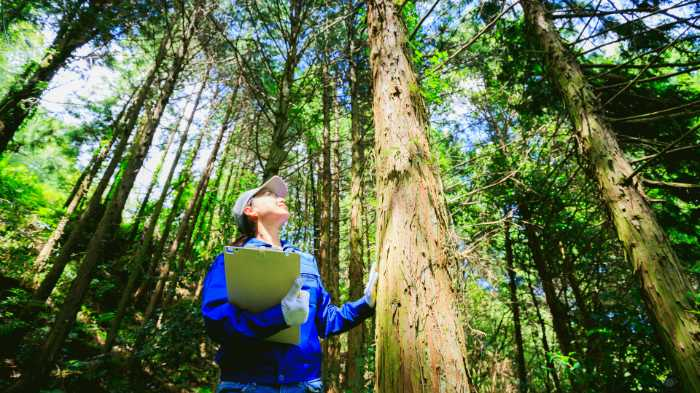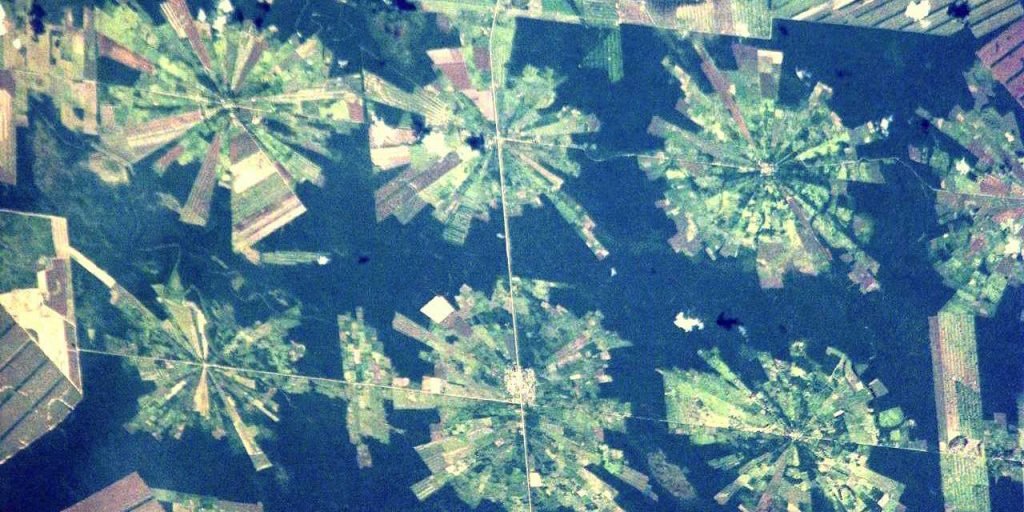
Forestry projects can be complex and challenging to plan and execute properly. There are many things to consider when undertaking a forestry project, from the environmental impact to the economic feasibility. In this blog post, we will discuss the various stages of a forestry project, from planning to execution. We will also highlight some of the key considerations that need to be taken into account during each stage. So if you’re thinking about embarking on a forestry project, make sure you read this blog post!
- What are reforestation projects?
- Why are forest inventories important?
- What is a forest carbon offset project?
- What are the three types of forest carbon offset projects?
- Does forestry include agriculture?
- How does forestry impact agriculture?
- What is the process of afforestation?
- 1. Planning
- 2. Preparation
- 3. Planting
- 4. Maintenance
- What do Agroforesters do?
- How do you breed trees in forestry?
- What is improved forest management?
- What are forest carbon offsets?
- What are forest carbon stocks?
- What is the Auroville afforestation project?
- Conclusion
- FAQs
- What is the role of the California Air Resources Board?
- Can an individual trade forest carbon stocks?
- What are the benefits of carbon storage in forests?
- What is a sustainable forestry initiative?
- What is the difference between voluntary and compliant carbon markets?
- Is there a difference between carbon credits and offset credits?
- What are forest carbon projects?
- What is the American Tree Farm System?
What are reforestation projects?

Reforestation projects are any efforts to replant forests in areas where they have been cleared. This can be done for a variety of reasons, including restoring habitat for wildlife, stabilizing soils to prevent erosion, and providing renewable resources like timber and wood products. In many cases, reforestation projects are undertaken by government agencies or nonprofit organizations. However, private landowners can also take steps to replant forests on their property.
Reforestation efforts often focus on planting native species of trees, which are best suited to the local environment. This can help to ensure the long-term success of the project and prevent the need for continued intervention. With proper planning and care, reforestation projects can have a significant positive impact on the environment.
Why are forest inventories important?
Forest inventories are important because they provide information about the status of a forest. This information can be used to assess the health of the forest and to identify management priorities. Forest inventories can also be used to monitor the success of management activities over time.
In order to be effective, forest inventories must be conducted regularly. They should also be designed to meet the specific needs of the management team. For example, if the goal is to assess the health of the forest, then the inventory should focus on indicators of tree health such as canopy cover and leaf area index. If the goal is to monitor the success of a reforestation project, then the inventory should focus on tree species composition and density.
What is a forest carbon offset project?
A forest carbon offset project is a way of reducing greenhouse gas emissions by planting trees. Trees absorb carbon dioxide from the atmosphere and store it in their leaves, branches, and trunk. Over time, as the trees grow, they can sequester significant amounts of carbon dioxide, offsetting emissions from other sources.
Forest offset projects can be undertaken by individuals, businesses, or governments. They can be small-scale, such as planting a few trees in a backyard, or large-scale, such as planting a forest in an area that has been deforested. In order to maximize the carbon sequestration potential of a carbon offset project, it is important to choose the right tree species for the location and to ensure that the trees are healthy and well-managed.
What are the three types of forest carbon offset projects?
There are four types of forest carbon offset projects: reforestation, afforestation, forest conservation/avoided conversion, and sustainable forest management.
- Reforestation is the planting of trees in an area where there was previously a forest but the trees have been cleared.
- Afforestation is the planting of trees in an area that has not previously had a forest.
- Forest conservation/avoided conversion is the protection and improvement of existing forests so that they continue to store carbon.
- Sustainable Forest management is the implementation of more sustainable forestry practices that help to reduce greenhouse gas emissions and increase carbon storage.
All four of these approaches can help to mitigate climate change by reducing atmospheric concentrations of greenhouse gases.
Does forestry include agriculture?
Forestry and agriculture are both land-use practices that involve the management of plants. However, there are some important distinctions between the two. Agriculture typically refers to the cultivation of crops for human consumption, while forestry generally focuses on the management of forests for timber production. In addition, forestry usually encompasses a broader range of activities, such as ranger services and nature conservation. As a result, it is safe to say that forestry includes agriculture, but not vice versa.
How does forestry impact agriculture?
Forestry is the practice of growing and managing trees. It can have a significant impact on agriculture, both positively and negatively. On the positive side, forestry can help to prevent soil erosion and provide essential nutrients for crops. Trees can also act as windbreaks, protecting vulnerable crops from strong winds. However, forestry can also have negative impacts on agriculture.
Forests can harbor pests and diseases that can spread to crops, and trees can compete with crops for water and sunlight. In addition, forestry can lead to habitat loss for animals that are important for crop pollination or pest control. As a result, it is important to consider both the positive and negative impacts of forestry when managing agricultural land.

What is the process of afforestation?
planting trees in an area where there was no forest before. Afforestation is the deliberate Act of restoring Tree cover to an area where it has previously been cleared. The primary purpose of afforestation is usually to create or enhance forested landscapes for conservation, industry, or recreation. Forest rehabilitation is a related process that strives to achieve similar objectives through the regeneration of existing forests rather than planting new ones. These two processes are often used in combination or interchangeably because they strive to achieve similar objectives.
There are many factors that contribute to successful afforestation, including soil type, climate, topography, and rainfall. In addition, the species of tree being planted will also play a role in how well the new forest thrives. Proper planning and care are essential to the success of any forestry project, whether it be afforestation or forest rehabilitation. The process of afforestation generally includes four distinct steps:
1. Planning
The first step in any afforestation project is planning. This includes deciding what tree species to plant, where to plant them, and how to care for them. Depending on the size and location of the project, different approaches may be taken. For example, small-scale projects may be able to use existing infrastructure, such as roads and power lines, while large-scale projects may require the construction of new infrastructure.
2. Preparation
Before you can begin planting trees, it is important to prepare the site. This may involve clearing away debris, tilling the soil, and installing irrigation systems. Depending on the size of the project, this work may need to be done by hand or with heavy machinery. Once the site is prepared, you can begin planting trees. This is an important step in creating a new forest, as it will help ensure that the trees have a strong foundation to grow. If you do not properly prepare the site, it is likely that the trees will not survive or will take many years to reach maturity.
3. Planting
Once you have chosen the perfect spot for your new tree, it’s time to start planting. This process usually involves digging a hole for each tree, backfilling with soil, and ensuring that the tree is staked properly. If you are planting multiple trees, it is important to space them evenly so that they have enough room to grow.
4. Maintenance
Once the trees are in place, it is important to monitor their growth and health. This may involve watering during dry periods, removing dead or damaged branches, and controlling pest and disease outbreaks. With proper care, newly planted trees can thrive and create a healthy forest ecosystem.
What do Agroforesters do?
Agroforestry refers to people who combine trees and other plants with traditional crops or animals on the same piece of land. They do this in order to create a more efficient, sustainable, and productive system. Agroforestry has been practiced for centuries all over the world.
It is now gaining popularity in the United States as a way to combat soil erosion, improve water quality, and provide habitat for wildlife. The best thing about agroforestry is that it can be tailored to fit any size farm or piece of land. Whether you have a few acres or a few thousand, you can implement agroforestry practices that will benefit your land and your community.
How do you breed trees in forestry?
One of the most important aspects of forestry is tree breeding. This is the process of selecting trees with desirable characteristics and using them to produce offspring that inherit those traits. Tree breeders use a variety of methods to achieve their goals, including controlled pollination, genetic engineering, and radiation-induced mutations.
By carefully tailoring the genetics of trees, forest managers can improve the yields of timber, resistance to pests and diseases, and growth rates. In recent years, tree breeding has become increasingly sophisticated, thanks to advances in our understanding of genetics. As we continue to learn more about the secrets of plant DNA, we will be able to produce even more robust and productive trees for our forests.
What is improved forest management?
Improved forest management is the term used to describe the various techniques used to ensure that forests are healthy and productive. This includes tasks such as thinning, pruning, and controlled burning. It also involves the use of fertilizers and other soil amendments to maintain optimal growing conditions.
In addition, improved forest management often includes the development of programs to address specific threats such as insect infestations and wildfires. By taking these proactive steps, forest managers can help to ensure that forests remain healthy and productive for years to come.
What are forest carbon offsets?
Forest carbon offsets are a type of carbon offset that involves planting trees or preserving existing forests in order to offset emissions from other sources. Trees and other vegetation absorb carbon dioxide from the atmosphere, so by planting trees or preserving forests, it is possible to reduce the amount of carbon dioxide in the atmosphere and offset emissions from other sources.
Forest carbon offsets can be used to offset emissions from any source, but they are often used to offset emissions from activities such as deforestation, forest fires, and agricultural land-use changes. There are several different types of forest carbon offsets, including those that involve planting trees, conserving forests, and avoiding deforestation.
What are forest carbon stocks?
Forest carbon stocks are the total amount of carbon stored in a forest. This includes the carbon in leaves, branches, bark, roots, and soil. Forests play an important role in the global carbon cycle because they act as “sinks” for atmospheric carbon dioxide. As trees grow, they absorb and store carbon dioxide from the atmosphere. When trees are cut down or die, this stored carbon is released back into the atmosphere.
As a result, forests can help to moderate global climate change by sequestering carbon dioxide from the atmosphere. Additionally, forest management practices that promote healthy growth and prevent deforestation can help to maximize the ability of forests to store carbon.
What is the Auroville afforestation project?
The Auroville afforestation project is a large-scale effort to reforest an area of southern India that has been degraded by years of deforestation and land clearing. The project started in the early 1970s, aims to plant millions of trees in the region, in order to restore the area’s ecological balance and provide a sustainable source of wood for local communities.
In addition to tree planting, the project also includes initiatives such as soil conservation, water management, and alternative energy development. The Auroville afforestation project is one of the largest reforestation efforts in India, and it is hoped that it will serve as a model for similar projects in other parts of the country.
Conclusion
Forests are a vital part of the global ecosystem, and they play an important role in sequestering carbon dioxide from the atmosphere. Improved forest management can help to ensure that forests remain healthy and productive, while carbon offsets generated can be used to offset emissions from other sources. Forest carbon stocks are the total amount of carbon stored in a forest, and by promoting healthy growth and preventing deforestation, it is possible to maximize the ability of forests to store carbon. The Auroville afforestation project is one example of a large-scale effort to reforest an area that has been degraded by years of deforestation.

FAQs
What is the role of the California Air Resources Board?
The California Air Resources Board (CARB) is the “lead agency” in the state for developing and adopting regulations to reduce emissions of greenhouse gases (GHGs).
Can an individual trade forest carbon stocks?
Yes, anyone can trade forest carbon stocks. For example, an individual could own a carbon offset that represents the avoided emissions from one metric ton of carbon dioxide equivalent (CO₂e) stored in a registered forest project. The owner of the offset could then sell it to a company or person interested in offsetting their GHG emissions.
What are the benefits of carbon storage in forests?
Forests play an important role in the global carbon cycle as they sequester carbon dioxide (CO₂) from the atmosphere and store it in trees, plants, and soils. This process of carbon sequestration can help to offset GHG emissions from other sources. In addition, healthy forests provide many other ecosystem services such as clean water and air, wildlife habitat, and recreation.
What is a sustainable forestry initiative?
The Sustainable Forestry Initiative (SFI) is a voluntary program that promotes sustainable forestry practices. SFI-certified operations must meet standards for protecting water quality, wildlife habitat, and soil conservation, as well as harvest levels.
What is the difference between voluntary and compliant carbon markets?
Voluntary carbon markets are created and used by companies, organizations, and individuals to offset GHG emissions on a voluntary basis. Compliance carbon markets are established by governments to help meet mandatory GHG reduction targets.
Is there a difference between carbon credits and offset credits?
Carbon credits and offset credits are both units of measurement used to quantify GHG reductions. One carbon credit is equivalent to one metric ton of CO₂e. Offset credits are generated through projects that result in GHG reductions and can be used to offset emissions. Carbon credits are generated through the trading of GHG emissions.
What are forest carbon projects?
Forest carbon projects are activities that aim to reduce greenhouse gas emissions from deforestation and forest degradation. In other words, these projects work to combat climate change by protecting forests.
What is the American Tree Farm System?
The American Tree Farm System (ATFS) is a voluntary program that promotes sustainable forestry practices on private lands. ATFS-certified tree farms must meet standards for protecting water quality, wildlife habitat, and soil conservation, as well as harvest levels. certified tree farms must also have a management plan that is approved by a certified forester.

Dean Emerick is a curator on sustainability issues with ESG The Report, an online resource for SMEs and Investment professionals focusing on ESG principles. Their primary goal is to help middle-market companies automate Impact Reporting with ESG Software. Leveraging the power of AI, machine learning, and AWS to transition to a sustainable business model. Serving clients in the United States, Canada, UK, Europe, and the global community. If you want to get started, don’t forget to Get the Checklist! ✅
